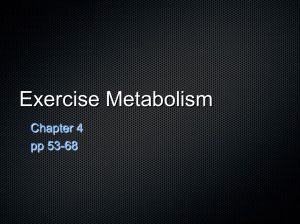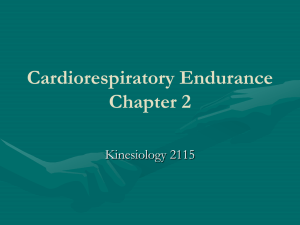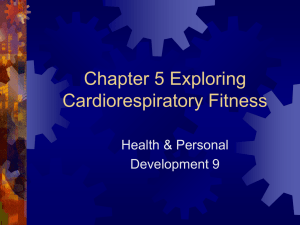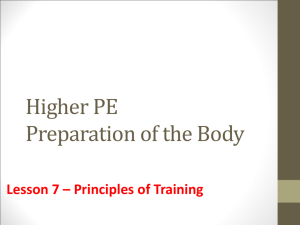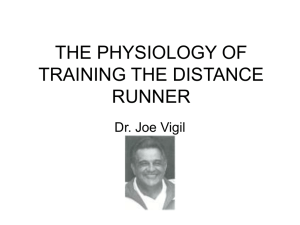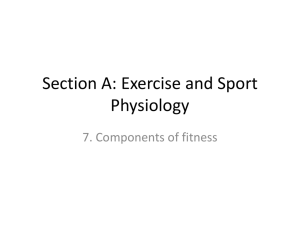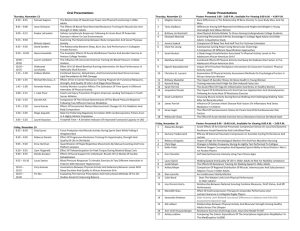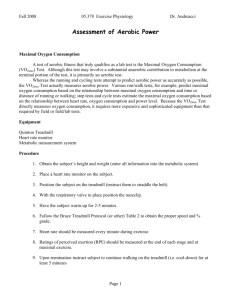Aerobic Capacity Live Show
advertisement
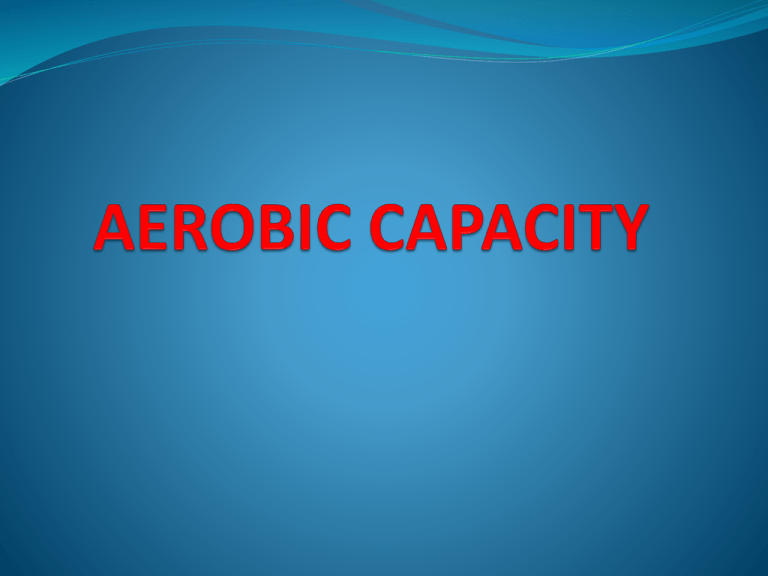
What is Oxygen Uptake? What is VO2 Max? OXYGEN UPTAKE - VO2 amount of oxygen consumed per unit of time (usually 1 minute) expressed as VO2 mean value at rest = 0.2 to 0.3 l min-1 VO2 increases proportionally to work intensity up to a maximum value - called VO2max DRAW A GRAPH TO ILLUSTARTE THE DIFFERENCE BETWEEN A TRAINED AND UNTRAINED ATHLETE IN RELATION TO THEIR VO2 MAX Trained Athlete Untrained Athlete AEROBIC CAPACITY the ability to do physical work which is dependant on the aerobic mechanism of energy supply STEADY STATE • the demands of the body for oxygen is balanced exactly by oxygen uptake FACTORS AFFECTING VO2 MAX • Availability of O2 in the tissue – Is haemoglobin saturated with oxygen at muscle • • • • tissue – Varies individual to individual – Myoglobin in muscle cells is fully saturated with O2 (has sufficient recovery time elapsed?) reduction in VO2max will cause decline in aerobic performance Age – reduction by 10% per decade Aerobic training can improve by 10% Women tend to have greater reductions in VO2 max DRAW A GRAPH TO ILLUSTARTE VO2 MAX AGAINST AGE FOR TRAINED & UNTRAINED MALES ONSET OF BLOOD LACTATE ACCUMILATION OBLA as work intensity increases lactic acid starts to accumulate above resting values at a certain point this produces muscle fatigue and pain the resultant low pH inhibits enzyme action and cross bridge formation hence muscle action is inhibited physical performance deteriorates this point governs the lactic aerobic threshold trained athletes begin OBLA at higher work intensities and higher values of VO2max than untrained people FOOD FUEL USAGE FOOD FUEL USAGE this depends on : EXERCISE INTENSITY EXERCISE DURATION SOURCES OF FUELS main source of CHO for muscular energy during exercise is glucose derived from stored muscle and liver glycogen lack of CHO fuel is the limiting factor for aerobic endurance performance main source of fat for muscular energy during exercise is free fatty acids (FFA) derived from triglycerides stored as adipose tissue under the skin and in muscle tissue FOOD FUEL USAGE FOR AEROBIC ACTIVITY ADAPTATIONS TO AEROBIC CAPACITY cardiovascular system becomes more efficient more haemoglobin is created and is available in blood for oxygen transport pulmonary systems become more efficient lung volumes increase slightly, greater volumes of air can be breathed per breath Improved oxygen recovery Hence reduction in DOMS More myoglobin is created in muscle cells More and bigger mitochondria in muscle cells
